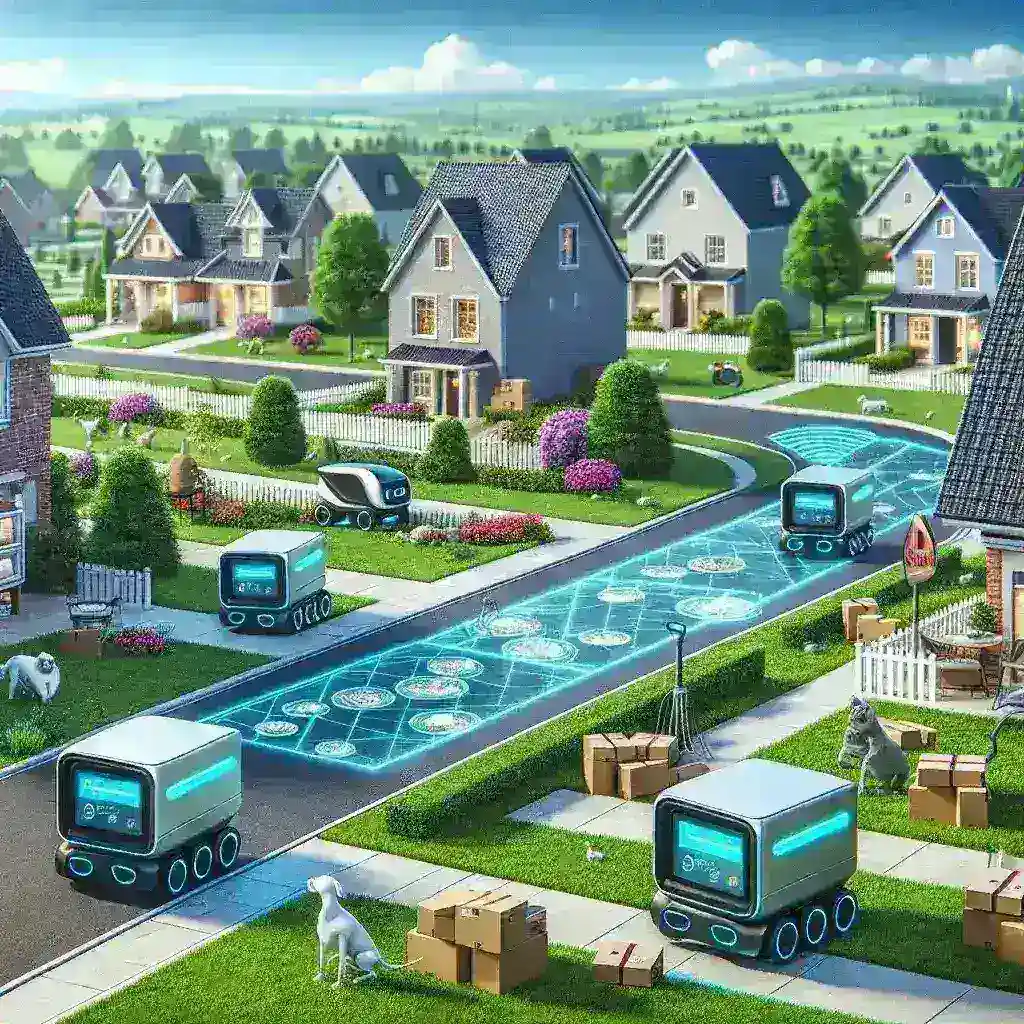Introduction
The rise of technology in everyday life has revolutionized countless industries, and food delivery is no exception. In an age where convenience is king, DoorDash is taking a significant step forward by unveiling AI optimized delivery robot fleets in U.S. suburbs. This initiative promises to redefine how consumers receive their meals, offering an innovative solution to logistics and delivery challenges.
The Evolution of Delivery Services
As the world adapts to a fast-paced lifestyle, traditional delivery methods have struggled to keep up. From the early days of bicycle couriers to the current dominance of app-based platforms, the delivery service landscape has seen remarkable changes. Today, the focus is not only on speed but also on efficiency and sustainability. DoorDash’s new initiative reflects this evolution, aiming to merge technological advancement with consumer needs.
Historical Context
DoorDash began its journey in 2013, primarily as a food delivery service connecting local restaurants with hungry customers. Over the years, it has expanded its offerings, including grocery delivery and convenience items. The introduction of AI optimized delivery robots marks a pivotal moment in DoorDash’s history, showcasing its commitment to innovation. In recent years, companies like Amazon and Postmates have also explored robotics in delivery, setting the stage for a competitive landscape.
What Are AI Optimized Delivery Robots?
AI optimized delivery robots are autonomous vehicles designed to transport goods efficiently. Equipped with advanced technology, these robots can navigate urban environments, avoid obstacles, and deliver items directly to consumers’ doorsteps. DoorDash’s fleet is tailored to operate in suburban areas, where traditional delivery methods may face challenges such as traffic congestion and distance.
How Do They Work?
- Autonomous Navigation: Utilizing GPS, sensors, and machine learning, these robots can make real-time decisions while navigating streets and sidewalks.
- Order Management: Integrated software systems allow robots to manage multiple orders simultaneously, optimizing delivery routes based on demand.
- Customer Interaction: Users can track their delivery in real-time through the DoorDash app, enhancing transparency and customer satisfaction.
Benefits of AI Optimized Delivery Robots
Increased Efficiency
One of the primary advantages of employing AI delivery robots is efficiency. With the ability to calculate optimal routes and avoid traffic, these robots can significantly reduce delivery times. This efficiency translates to happier customers and potentially increased sales for local restaurants.
Cost-Effective Solutions
Delivering food traditionally involves costs associated with labor, fuel, and vehicle maintenance. By utilizing robots, DoorDash can minimize these expenses, enabling them to offer competitive pricing while maintaining profitability. This cost-effectiveness can also be passed on to consumers in the form of lower delivery fees.
Environmental Impact
As society becomes more environmentally conscious, DoorDash’s robot fleets contribute to sustainability efforts. These robots are often electric, reducing carbon emissions associated with traditional delivery vehicles. Moreover, by optimizing delivery routes, they further decrease fuel consumption and traffic congestion.
Challenges and Considerations
Public Perception
While technology enthusiasts may welcome the shift toward robotic delivery, general public acceptance remains a question. Some consumers may feel uncomfortable with the idea of robots handling their food, raising concerns about hygiene and safety. DoorDash must address these perceptions through effective communication and transparency.
Regulatory Hurdles
The deployment of delivery robots is not without its challenges. Local regulations can impede their operation, with some cities imposing restrictions on where and how these robots can navigate. DoorDash will need to work closely with local governments to ensure compliance and facilitate smoother integration into communities.
Future Predictions for Delivery Robots
As technology continues to evolve, the future of delivery robots looks promising. With advancements in artificial intelligence and robotics, we can expect more sophisticated and capable machines. The integration of delivery robots could expand beyond food to include parcel deliveries, essential goods, and more.
The Role of AI
AI will play a pivotal role in shaping the future of delivery robots. Enhanced algorithms will enable robots to learn from their environments, improving their navigation and decision-making capabilities. Furthermore, AI could facilitate better customer interactions, making the delivery experience more personalized and efficient.
Real-World Examples
Several companies have already implemented robotic delivery systems successfully, paving the way for DoorDash’s entry into this arena. For instance, companies like Starship Technologies and Robby Technologies have rolled out delivery robots on college campuses and urban areas. These examples showcase the viability of autonomous delivery solutions and the potential for broader adoption.
Cultural Relevance
The introduction of AI optimized delivery robots is not just a technological shift; it reflects changing consumer behavior and expectations. In an era where instant gratification is paramount, DoorDash’s initiative aligns with cultural trends favoring convenience and efficiency. This cultural relevance underscores the importance of adapting to consumer needs in a rapidly evolving market.
Conclusion
DoorDash’s unveiling of AI optimized delivery robot fleets in U.S. suburbs marks an exciting chapter in the evolution of delivery services. By embracing technology, the company is poised to enhance consumer experiences, reduce operational costs, and contribute to sustainable practices. As DoorDash navigates the challenges and opportunities presented by this initiative, the future of food delivery may very well be robotic. With advancements in AI and robotics on the horizon, consumers can expect an increasingly seamless and efficient delivery experience. The question remains: will the convenience of robot delivery win over the hearts and minds of consumers, or will traditional methods prevail? Only time will tell.

